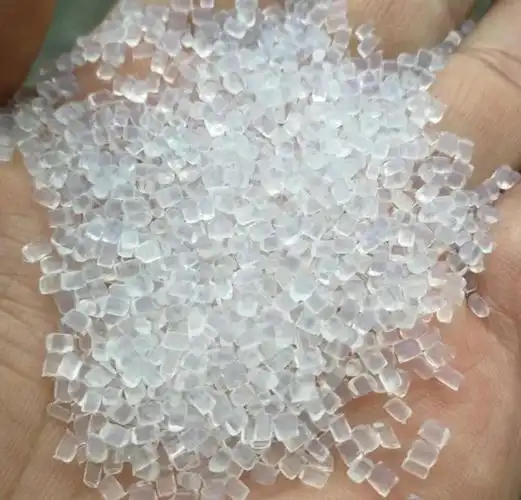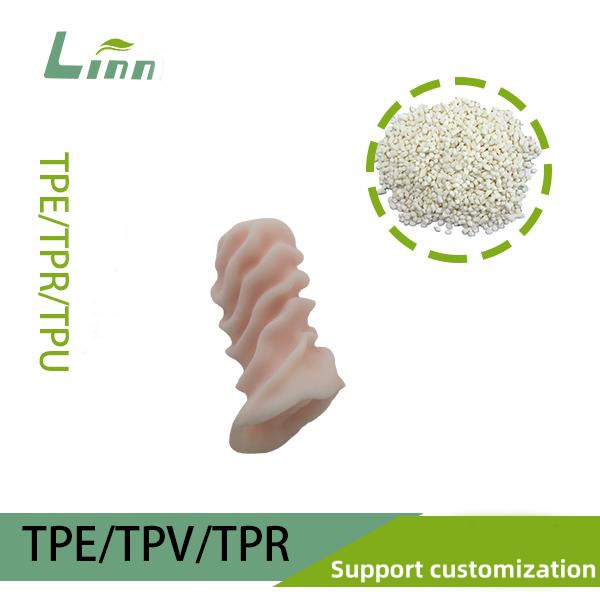As someone who’s been immersed in the plastics industry for over a decade, working with manufacturers to produce everything from medical devices to consumer electronics, I’ve spent a lot of time fine-tuning the use of thermoplastic elastomers (TPEs). TPEs are a fantastic choice for plug manufacturing due to their flexibility, durability, and ability to form tight seals. But one challenge I often hear from clients is: How can you make TPE raw material flow better during injection molding for plugs? Poor flowability can lead to defects like incomplete mold filling, surface imperfections, or inconsistent part quality, which are critical issues for plugs that need to meet strict electrical and safety standards. Drawing from my years of trial and error on the factory floor, I’ll share practical strategies to enhance TPE flowability, covering material selection, compounding, processing tweaks, and mold design. My goal is to help you achieve smooth, high-quality TPE plugs with minimal headaches.

Why Flowability Matters for TPE Plugs
Flowability refers to how easily a molten TPE flows into a mold during injection molding. For plugs, which often have intricate geometries like thin walls, undercuts, or overmolded components, good flowability is essential to ensure the material fills every detail of the mold without defects. Poor flow can result in short shots (incomplete filling), burn marks, or excessive flash, all of which can compromise the plug’s performance and safety. I’ve seen production lines stall because a TPE compound was too viscous, leading to defective plugs that failed quality checks. Improving flowability not only boosts product quality but also reduces cycle times and waste, saving costs in high-volume manufacturing.
Factors Affecting TPE Flowability
TPE flowability is influenced by material composition, processing conditions, mold design, and equipment setup. Let’s break down each factor and explore how to optimize them for plug manufacturing.
1. Material Composition
The flowability of TPE depends on its formulation, including the base polymer, fillers, and additives. TPEs for plugs are often styrenic block copolymers (SBCs), thermoplastic polyurethanes (TPUs), or thermoplastic vulcanizates (TPVs), each with different flow characteristics:
SBCs: Typically have good flow but may need additives to enhance stiffness for plugs.
TPUs: Can be viscous, requiring careful formulation to improve flow without sacrificing strength.
TPVs: Offer excellent durability but may be less fluid due to cross-linked rubber phases.
I once worked on a TPE plug project where the initial TPU compound was too viscous, causing short shots. Switching to a lower-viscosity grade improved flow dramatically.
Strategies:
Choose Low-Viscosity Grades: Select TPE grades with a high melt flow index (MFI), typically 20-50 g/10 min (measured at 190°C/2.16 kg), for better flow. Check the manufacturer’s datasheet for MFI values.
Add Flow Enhancers: Incorporate additives like silicone-based lubricants or low-molecular-weight waxes (0.5-2% by weight) to reduce viscosity. I’ve used silicone additives to improve flow without affecting the plug’s insulation properties.
Minimize Fillers: High filler content (e.g., calcium carbonate) increases viscosity. For a plug project, I reduced filler from 20% to 10%, boosting flow while maintaining strength.
My Tip: Work with your TPE supplier to customize a compound with optimal flow for plug geometries.

2. Processing Conditions
Injection molding parameters like temperature, pressure, and speed directly impact TPE flow. TPEs are sensitive to heat and shear, so precise control is crucial.
Melt Temperature: TPEs typically melt at 160-220°C, but higher temperatures reduce viscosity for better flow. For a TPE plug, I set the barrel temperature at 180-200°C for SEBS-based TPEs, adjusting up to 210°C for TPUs if needed.
Mold Temperature: A warmer mold (e.g., 30-50°C) improves flow into intricate plug features like pin slots or strain reliefs. I once raised the mold temperature from 20°C to 40°C to eliminate flow lines on a TPE plug.
Injection Speed: A faster injection speed helps fill complex molds before the TPE cools, but too fast can cause shear heating and degradation. I use a multi-stage injection profile—fast initially, then slower for packing.
Injection Pressure: Lower pressure (e.g., 50-100 MPa) is often sufficient for TPEs, as excessive pressure can cause flash. I adjust based on mold complexity.
My Tip: Start with the TPE manufacturer’s recommended settings and fine-tune during trial runs to balance flow and part quality.
3. Mold Design
The mold’s design plays a big role in how well TPE flows. Plugs often have thin walls or intricate features, which demand optimized molds:
Gate Design: Use edge gates or fan gates to distribute flow evenly and reduce shear stress. For a TPE plug, I switched from a pin gate to a fan gate to eliminate flow marks.
Runner System: A hot runner system keeps TPE molten, improving flow for complex molds. I’ve found hot runners reduce waste in high-volume plug production.
Venting: Adequate vents (0.01-0.03 mm) prevent trapped air, which can block flow and cause burns. I added micro-vents to a plug mold to fix incomplete filling.
Draft Angles: TPEs stick to molds due to their elasticity, so I use 1-3° draft angles to ease part release without affecting flow.
My Tip: Collaborate with your mold maker to optimize gate size and venting for TPE’s low viscosity.

4. Equipment Setup
The injection molding machine must be suited for TPE’s properties:
Screw Design: A low-shear screw (compression ratio of 2:1 to 2.5:1) prevents excessive heat buildup, which can increase viscosity. I’ve seen high-shear screws degrade TPE, causing poor flow.
Barrel and Nozzle: Use a barrel with precise temperature control and a non-return valve to prevent backflow, ensuring consistent melt delivery.
Clamping Force: TPEs require lower clamping force (2-4 tons/cm²) than rigid plastics, which helps maintain mold alignment and flow.
My Tip: Ensure the machine is calibrated for TPE’s low viscosity to avoid overpressurizing or overheating.
| Factor | Impact on Flowability | Optimization Strategy | Key Parameter |
|---|---|---|---|
| Material Composition | High viscosity hinders flow | Use high-MFI grades, add lubricants | MFI 20-50 g/10 min |
| Processing Conditions | Improper temps/pressure restrict flow | Adjust melt (180-200°C) and mold temp (30-50°C) | Multi-stage injection |
| Mold Design | Poor gates/vents block flow | Use edge/fan gates, add vents | 0.01-0.03 mm vents |
| Equipment Setup | High shear increases viscosity | Use low-shear screw, precise controls | Compression ratio 2:1-2.5:1 |
Practical Steps to Improve TPE Flowability
Based on my experience, here’s a detailed plan to enhance TPE flowability for plug manufacturing:
1. Select the Right TPE Grade
Work with suppliers like Kraton, Teknor Apex, or Dow to choose a TPE with a high MFI (e.g., 30-50 g/10 min at 190°C/2.16 kg) for plugs with thin walls or complex shapes.
For electrical plugs, prioritize flame-retardant TPEs with good flow, like halogen-free TPVs, to meet safety standards.
Request samples to test flowability in your mold before committing to a large batch.

2. Optimize Compounding
Add flow modifiers like silicone lubricants (0.5-1% by weight) to reduce viscosity without compromising strength. I used a silicone additive in a TPE plug project to cut cycle time by 10%.
Minimize fillers (e.g., calcium carbonate) to below 10% to improve flow while maintaining insulation properties.
Ensure uniform blending of colorants or additives to avoid flow inconsistencies. I use a gravimetric feeder for precise mixing.
3. Fine-Tune Processing Parameters
Melt Temperature: Start at 180°C for SEBS-based TPEs, increasing to 200-210°C for TPUs if flow is poor. Monitor for signs of degradation (e.g., stickiness).
Mold Temperature: Set at 30-40°C for most plugs, adjusting to 50°C for intricate designs to improve flow into details.
Injection Speed: Use a fast initial speed to fill the mold, then slow down for packing to avoid flash. I set speeds at 50-100 mm/s for TPE plugs.
Holding Pressure: Apply 50-70% of injection pressure for 2-5 seconds to prevent sink marks while maintaining flow.
4. Enhance Mold Design
Use fan gates or edge gates for even flow distribution, especially for multi-cavity plug molds.
Add micro-vents (0.01-0.03 mm) to prevent air traps, which can disrupt flow and cause burns.
Polish mold surfaces or apply a silicone-free release agent to reduce sticking and improve flow.

5. Maintain Equipment
Use a low-shear screw to minimize heat buildup, which can increase viscosity.
Clean the barrel and nozzle regularly to remove degraded TPE residue, which can clog flow paths.
Calibrate the machine to ensure consistent pressure and temperature delivery.
Common Flow-Related Issues and Fixes
Despite careful planning, flow issues can arise. Here are problems I’ve encountered and how to solve them:
Short Shots: Incomplete mold filling due to low temperature or pressure. Increase melt temperature by 5-10°C or injection pressure by 10 MPa.
Flow Lines: Caused by uneven flow or cold mold. Raise mold temperature to 40-50°C and use a fan gate for better distribution.
Burn Marks: Result from trapped air or overheating. Add vents and reduce melt temperature by 5-10°C.
Excessive Flash: Due to overpressurizing or poor mold fit. Lower injection pressure and check mold alignment.

My Experience: Solving Flow Challenges
One of my most memorable projects was molding TPE plugs for a consumer electronics company. The initial TPE compound (a TPU with 15% filler) was too viscous, causing short shots in the strain relief area. We switched to a higher-MFI grade (40 g/10 min), added 0.5% silicone lubricant, and raised the mold temperature to 45°C. The result? Flawless plugs with smooth surfaces and tight seals, produced 15% faster. Another project involved overmolding TPE onto a rigid plug body, where poor flow led to weak bonding. Adjusting the injection speed and preheating the substrate fixed the issue.
Improving TPE flowability for plug manufacturing is all about balancing material selection, processing conditions, and mold design. With the strategies above, you can achieve consistent, high-quality plugs that meet performance and safety standards. If you’re struggling with flow issues or starting a new TPE plug project, share your challenges in the comments—I’m happy to offer tailored advice from my years in the industry!
Frequently Asked Questions
Q1: How do I choose a TPE grade for good flow in plug manufacturing?
A: Select a grade with a high melt flow index (20-50 g/10 min) and low filler content. Consult the supplier for flame-retardant options suitable for electrical plugs.
Q2: Can additives improve TPE flow without affecting plug quality?
A: Yes, silicone-based lubricants or low-molecular-weight waxes (0.5-2%) enhance flow without compromising insulation or strength. Test additives to ensure compatibility.
Q3: Why do my TPE plugs have flow lines or short shots?
A: Flow lines stem from uneven flow or cold molds—raise mold temperature to 40-50°C and use fan gates. Short shots indicate low temperature or pressure—increase melt temperature by 5-10°C or pressure by 10 MPa.
Q4: Is TPE flowability affected by overmolding?
A: Yes, overmolding requires good flow to bond with the substrate. Use a high-MFI TPE, preheat the substrate, and optimize injection speed for adhesion.





